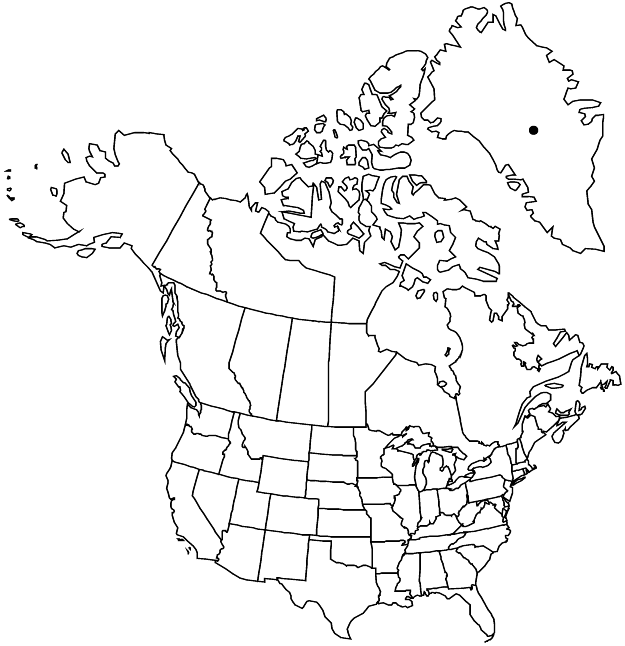Arenaria pseudofrigida
in V. L. Komarov et al., Fl. URSS 6: 537. 1936.
Plants perennial, forming cushions or mats. Taproots filiform to somewhat thickened. Stems 20–40+, procumbent, green, 3–14 cm; internodes terete to angular, 1/2–1+ times as long as leaves, shiny, pubescent in lines or throughout, hairs retrorsely curved. Leaves connate basally, with scarious sheath 0.2–0.3 mm, sessile; blade 1-veined (prominent proximally), oblanceolate to spatulate, 2–6 × 0.8–1.8 mm, succulent, margins thickened, minutely scarious-granular, ± shiny, ciliate in proximal 1/2, apex ± obtuse, sometimes pustulate, glabrous; axillary leaf clusters absent. Inflorescences terminal or axillary, open, leafy, 1–4-flowered cymes in distal leaf axils. Pedicels erect or nodding in fruit, 2–12 mm, retrorsely pubescent. Flowers: sepals green or distally purple, 3-veined (2 lateral veins 1/2 times as long as midvein), sometimes keeled, narrowly lanceolate (herbaceous portion narrowly lanceolate), 3–4 mm, to ca. 5 mm in fruit, apex ± acute, not pustulate, glabrous or sparsely stipitate-glandular; petals obovate, 5–8 mm, 12/3–2 times as long as sepals, apex acute to rounded. Capsules tightly enclosed by calyx, narrowly ellipsoid to cylindric, 3–5 mm, ca. equaling sepals. Seeds 15–20, black to reddish brown, reniform, compressed, 0.8–0.9 mm, shiny, low-tuberculate. 2n = 40.
Phenology: Flowering spring–summer.
Habitat: Open, dry to slightly moist sand or gravel
Elevation: 0-50 m
Distribution

Greenland, Europe.
Discussion
We follow B. Jonsell (2001) in treating Arenaria pseudofrigida as one of several arctic species that formerly were included in A. ciliata Linnaeus, a species now considered restricted to alpine regions of central Europe.
Selected References
None.